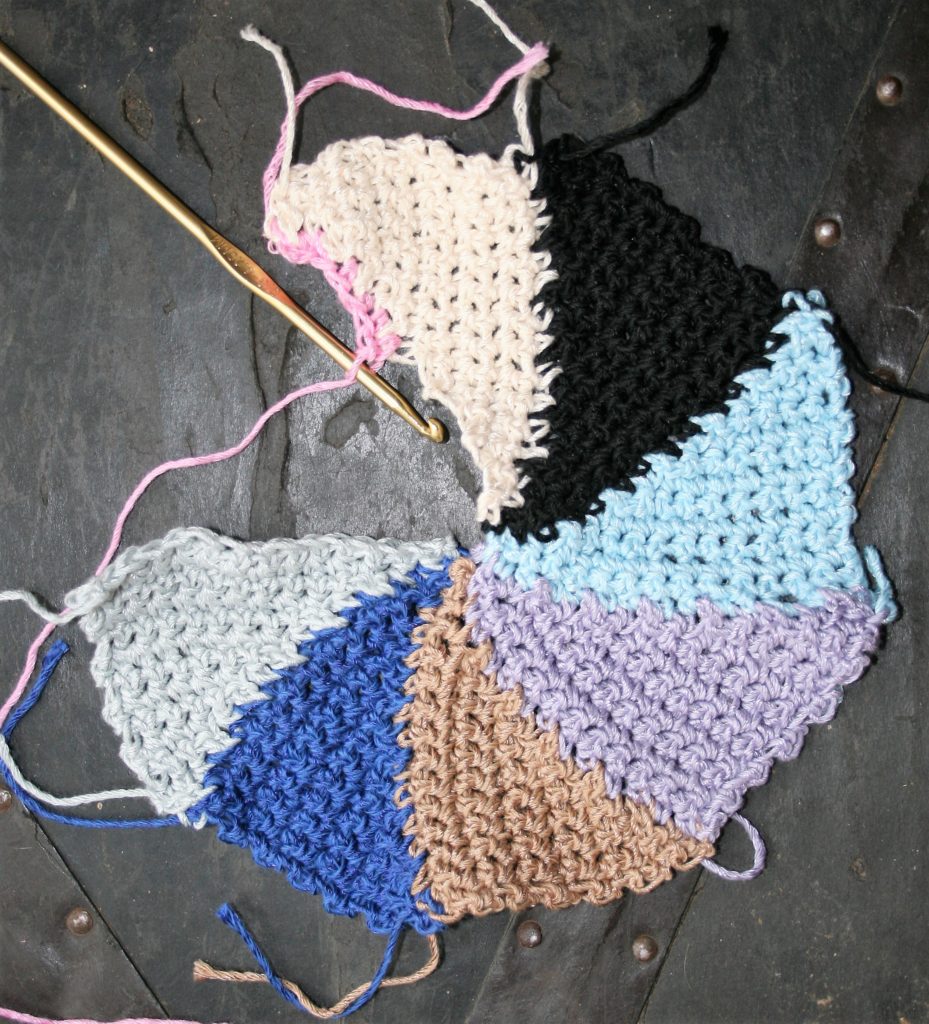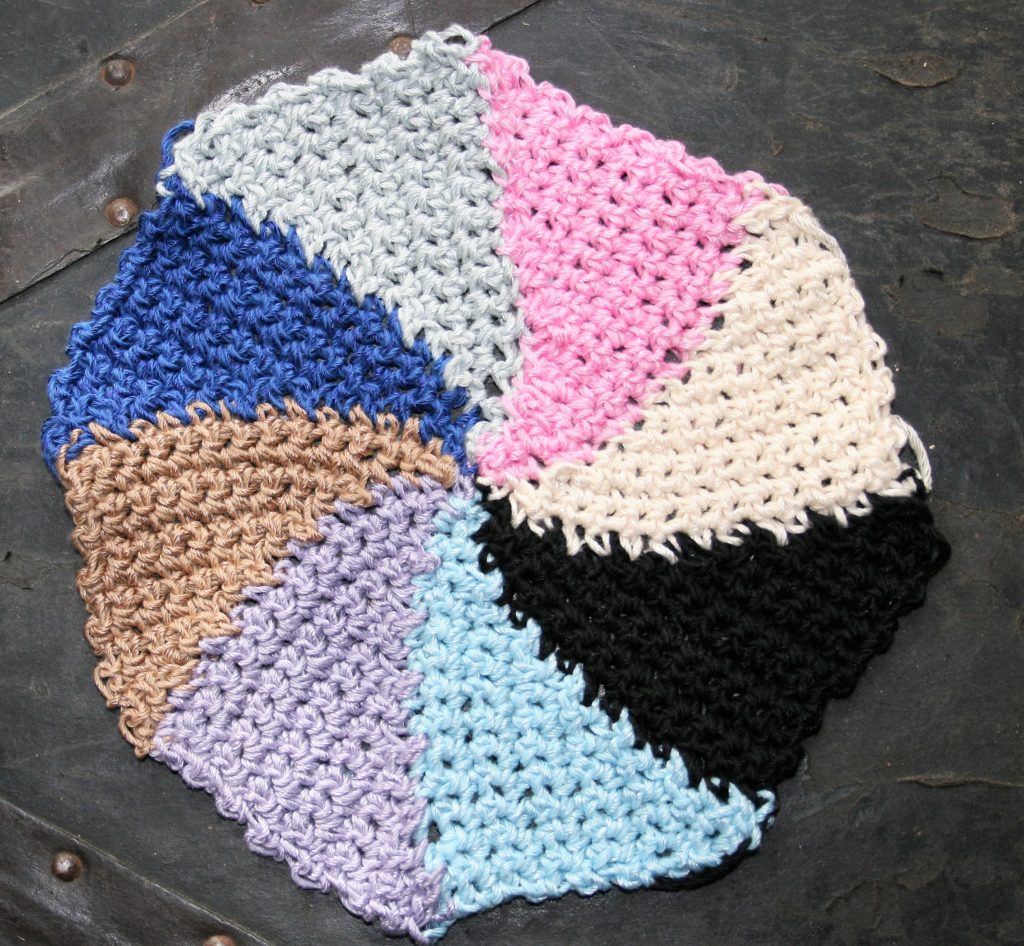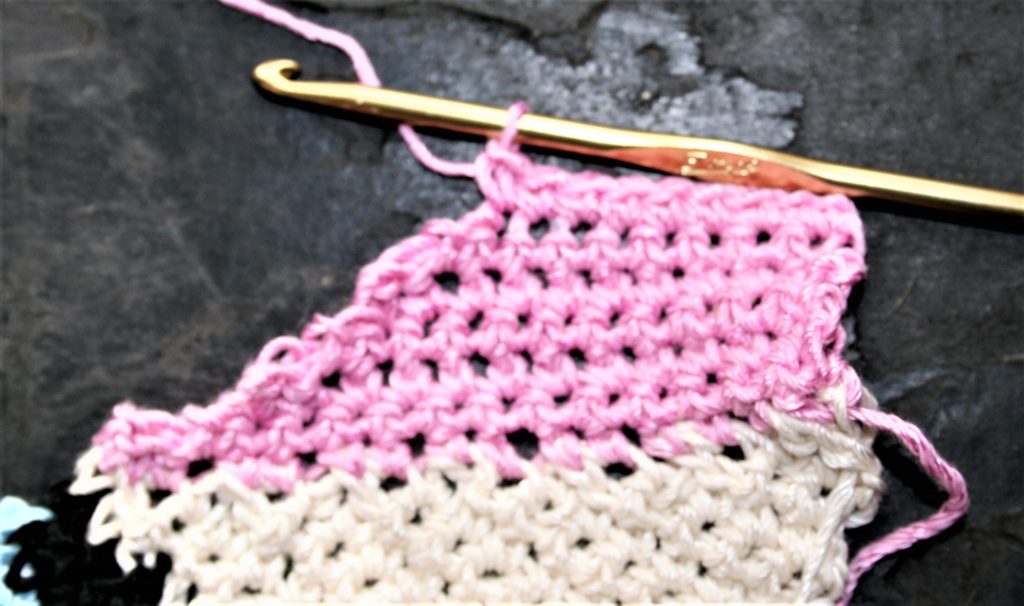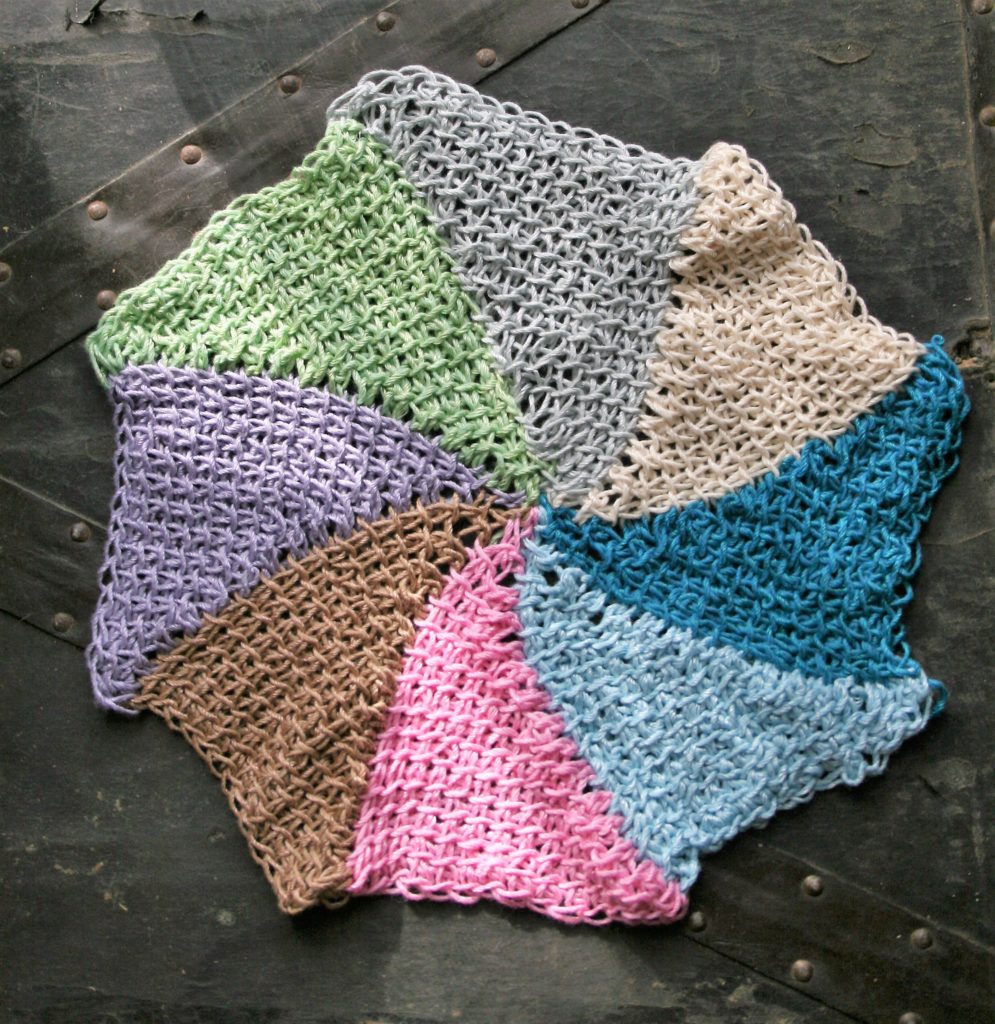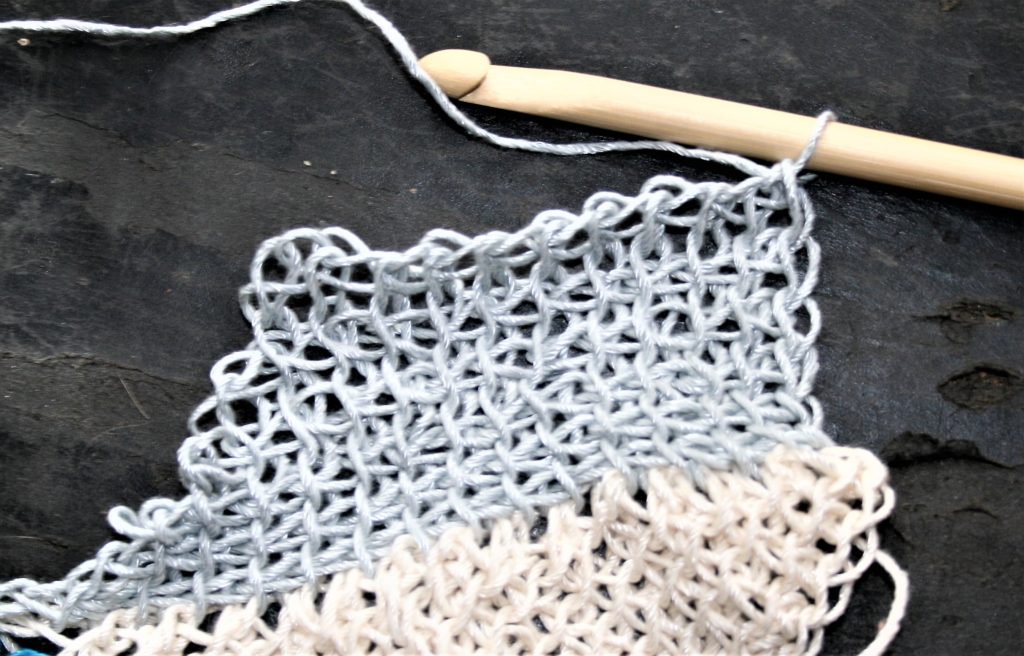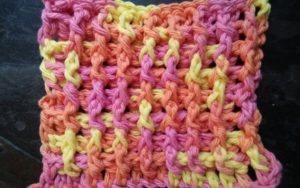There are times when crochet shares a perspective that I was not aware existed. I was invited to join an on-line conference call of crochet enthusiasts recently, and as I was sitting back and listening to the discussions, I was struck by a topic I had never considered. The heritage of a pattern, and how it connects us to others.
This particular topic was around a pattern for a pot holder.
Some Stories of Connection
I listened to a story of how a learned family pattern has continued through generations. How even after the legacy of the pattern has passed the skill is picked up by another and still being created and shared throughout the family. Connecting multiple generations and family tree branches, as so many had memories of this one pot holder pattern that was created by the family matriarch.
I heard another regarding a very similar pot holder pattern and how it was the captivating project that encouraged them to further their own crochet skills so as to create the pattern themselves.
Still more was the eagerness of others to learn this pattern to make the same connections with family and each other.
My Take Aways
I was in awe of how one simple pattern was connecting all of these people, and how they shared that it was a connection throughout those that they love.
Everyone may not crochet, but the legacy of a simple crochet pattern has connected these families. That to me is mesmerizing, as I have no connection to those in my family that crocheted before me. I may have some hooks that belonged to my great-grandmother, but I never met her, I have never seen any of her handiwork. There are no family patterns in my family that holds these vivid memories for me, but it a wonderful to know that these exist of others, and I feel honored to have heard their stories.
If you want to create attempt this legacy potholder, below is a similar pattern to those that were engaging the memories of others. I have used this pattern for several years to help new crocheters practice their skills.
Free Pattern
Diagonal Corners Pot Holder
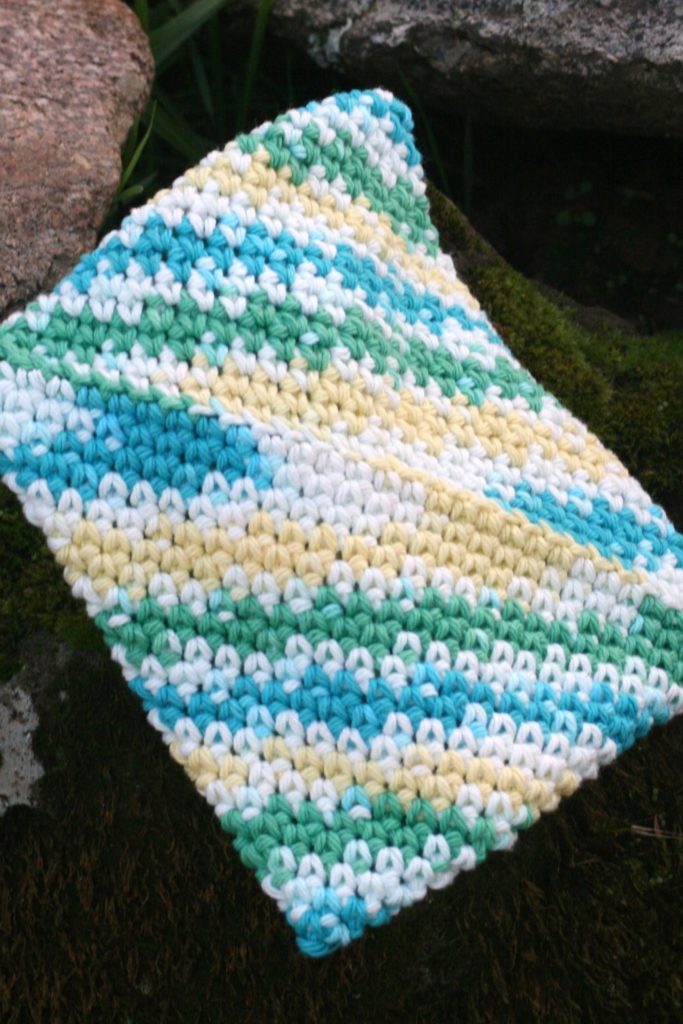
Materials List
- Size J/10/6.0mm hook
- Approximately 90yd of medium weight yarn, sample used: Lily Sugar’n Cream medium weight 100% USA Grown Cotton yarn (2oz/56.7g/95yrd/86m), 1 skein color# 102002 Mod Ombre
- Removable Stitch Marker
- Tapestry Needle
Details
Finished measurements: 7”x 6.5”
Gauge: is not critical for this project
Getting Started
Rnd1: Ch 30, 3sc in 2nd ch from hook, sc in next 27 ch, 3 sc in last ch, working in back loops of beg ch, sc in next 27 ch.
Rnd 2: Without joining, work sc in next 2 sts, insert stitch marker in last st created, sc in each st around to marker.
Rnds 3-18: Sc in each st around.
Finishing
Leaving a long tail, cut yarn and pull through loop on hook. (Finished off.) Fold the edges of round 18 together to allow pot holder to lay flat. Thread tapestry needle through long tail and weave through both sides of Round 18, sewing seam together. Weave ends in.

